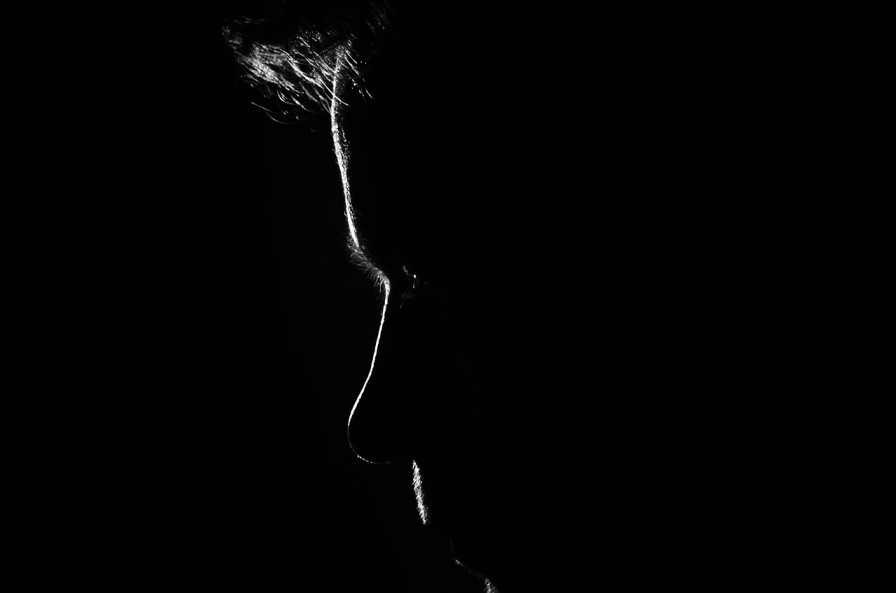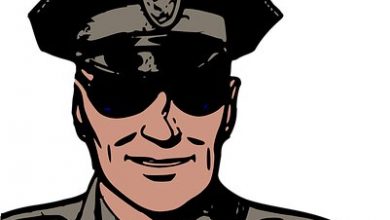
The novel is introduced by an unnamed narrator who is given Yozo’s journals by a bartender, along with three of his photographs. This introduction and narration constitute the Prologue and the Epilogue of the novel. Yozo’s story is told by himself, through journals written and narrated in the first person.
The novel delves into the life of Yozo, a Japanese man, from his early years to adulthood, intricately portraying his gradual descent into self-destruction. Remarkably, the book draws parallels with Dazai’s own life, including his struggles with suicide. Nevertheless, the theme of isolation continues to resonate strongly in Japan, leaving a lasting impact on its people.
No Longer Human | ANALYSIS
The novel opens with an ekphrasis of three photographs: snapshots capturing Yozo in childhood, adolescence, and adulthood, respectively. These seemingly innocuous images, upon closer inspection, reveal what the narrator interprets as disturbing flaws, suggesting an inhuman essence in the subject. The child, initially described as “an adorable little boy,” transforms into a “wizened, hideous little boy” bearing a “monkey face,” The adolescent, characterized as “extraordinarily handsome,” sports an “adroit little smile” that, in the narrator’s view, lacks the depth of a human smile. It induces on the careful onlooker a sensation of “complete artificiality.” The final photograph is deemed “most monstrous of all” due to its complete lack of expression. Yozo, in his adult form, is depicted as wholly inhuman, incapable of conveying human emotions effectively.
This analysis contends that the harsh judgments pronounced upon these photographs arise primarily from the narrator’s intense self-denigration, rather than being indicative of inherent flaws within the character. Yozo firmly believes that he falls short of being a good human because he grapples with the concept of humans effortlessly shifting between their authentic selves and the facades they present to the world. He articulates his belief, stating:
“I am convinced that human life is filled with many pure, happy, serene examples of insincerity … people who seem unaware even that they are deceiving one another.”
However, he fails to grasp this intricate art of perfect insincerity that humans employ to project socially acceptable versions of themselves.
As a reader, one can choose to accept the premise presented—that Yozo Oba is inherently corrupted and unfit for humanity—or one can adopt the perspective that his self-awareness is precisely what defines his humanity. The latter viewpoint asserts that, by crafting such brutally self-deprecating self-portraits in the novel, Yozo endears himself to the reader and underscores the perception that he is, fundamentally, a tragically flawed human, akin to any other human being.
Yozo’s struggle lies in his inability to comprehend utilitarian needs; he perpetually finds himself perplexed by the seemingly irrational nature of human desires and requirements. Yozo possesses a heightened sensitivity to beauty and pleasure, and one of the aspects of life that causes him the most distress is the dreary and mundane quality of the world around him. During his childhood, he held a fascination for train station bridges, perceiving them as a sort of “foreign playground,” and the utility of pillow covers and bed sheets. However, the moment he realized these structures served a practical purpose, his interest waned entirely. This childlike, innocent inclination to seek whimsy is precisely why he struggles to grasp the mundane misfortunes that afflict others. He questions:
“If my neighbors manage to survive without killing themselves, without going mad, maintaining an interest in political parties, not yielding to despair, resolutely pursuing the fight for existence, can their griefs be genuine?”
Yozo’s unwavering pursuit of leading an authentic existence perpetuates a constant state of anxiety, stemming from his inability to relate to the grievances of those around him. He fears his peers because he feels disconnected from them, dreading exposure as an imposter of a human being due to his perception of being fundamentally dissimilar. Consequently, he constructs personas aimed at charming those in his vicinity and deceiving them into developing affection for him. Through the art of employing empty charms and deliberately making a spectacle of himself in school, he manages to dupe his classmates and teachers, successfully assimilating himself into the school community.
As a young adult sent to university with the support of his affluent family, Yozo enjoys the comforts of lodging and a generous allowance. However, instead of dedicating himself to his studies, he is lured into the company of questionable peers, squandering his evenings on women and alcohol. His superficial charm captivates women, but he also becomes acutely aware of how his façade manipulates these women to his desires, instilling in him a fear of his insincerity.
Yozo is a character who elicits both disdain and pity. He turns to vices as an escape from his fears, recognizing that drink, tobacco, and prostitutes as effective means of dissipating his dear and apprehension of human beings. Yet, as he delves deeper into these vices, he finds himself sinking further into the abyss of despair as he becomes trapped in a relentless cycle of self-loathing. Dazai’s portrayal of Yozo entices the reader to be moved by his pitiable nature rather than repelled by his increasingly reprehensible actions.
Yozo embarks on sordid affairs with married women, severs ties with his family after a failed double suicide attempt, and falls into the grip of a morphine addiction. Nevertheless, Yozo’s profound grief and despair pierce through these events. He yearns only to comprehend others and forge genuine human connections with those he encounters. However, his persistent fear of rejection due to his inability to relate to others leaves him perpetually misunderstood.
Yozo exhibits an extraordinarily heightened concern for how others perceive him. To put it more precisely, he upholds a facade as a defense mechanism against standing out or experiencing the “onslaughts of apprehension and terror at the thought that I am the only one who is entirely unlike the rest.”
By the conclusion of the novel, Yozo explicitly declares himself as “disqualified as a human being.” Nonetheless, it is worth noting that Yozo’s conception of what constitutes a human being is flawed, as he perceives humans as conforming to a homogenous standard while viewing any deviation as inhuman. From the perspective of a reader, there’s an inherent humanizing quality in Yozo’s aimless, deteriorating narrative, devoid of a clear plot or a definitive conclusion.
It may be noted that No Longer Human does not highlight a single cataclysmic event that inflicts Yozo’s “great suffering, destruction, and distress.” Instead, his experience mirrors that of many young hikikomori (socially withdrawn) individuals, as well as older Japanese citizens, in a relentless confrontation with disillusionment and reality. While it may seem almost too convenient that Yozo is inherently socially isolated and cynical from birth, it creates a character and a human portrayal that deviates from the stereotypical loner often present in the reader’s imagination. The predominant lament that permeates the pages is the notion of having been in a state of gradual decline since birth. Dazai’s words guide the narrative on a slow and inexorable descent towards a profoundly human conclusion.
No Longer Human | BACKGROUND
No Longer Human, Dazai’s final novel, was still being published in serialized form when the author, at the age of thirty-nine, tragically took his own life in June 1948. In examining the extensive autobiographical elements within Dazai’s life, it becomes evident that, much like the character Yozo, Dazai himself tended to neglect his academic pursuits while gravitating toward interests such as Marxism, engaging with prostitutes, and indulging in alcohol. Both individuals were born into privileged families, a circumstance that generated feelings of guilt within them. Curiously, both Yozo and Dazai made attempts to end their lives through drowning, in the company of young bar hostesses. It is noteworthy that both Yozo and Dazai managed to survive these harrowing experiences, whereas the young women accompanying them tragically did not. Furthermore, both Yozo and Dazai developed dependencies on morphine-based painkillers. Ultimately, Dazai chose to end his own life through drowning, while Yozo’s fate remains untold, with the possibility left to the interpretation of the reader that he may have met a similar tragic end.
No Longer Human | NARRATIVE & STRUCTURE
The “I novel,” known as “watakushi shōsetsu” or “shishōsetsu” in Japanese, is a literary genre from the 20th century in Japan. It is distinguished by its style of self-disclosure in which the author often serves as the central character of the narrative.
The emergence of the I-novel was influenced by the naturalist literary movement, which held sway in Japanese literature during the early years of the 20th century. The I-novel, deriving its name from the first-person perspective (“I”), adheres to the fundamental principles of “reality” and “sincerity.” This genre is firmly grounded in the life experiences of the author. Thus, there is a direct correspondence between the author’s own experiences and the narrative within the novel, with some leeway for minor variations. Secondly, an I-novel delves into the inner reality rather than focusing on the precise facts, emphasizing the author’s spiritual or psychological state.
Following these characteristics, Osamu Dazai’s No Longer Human closely mirrors the author’s own life experiences, particularly his struggles with depression, alienation, and self-identity. Osamu Dazai drew heavily from his personal life to create the protagonist, Yozo Oba, and many events in the novel are thought to parallel Dazai’s own life.
The novel is narrated in the first person by the protagonist, Yozo. The reader gains deep insight into Yozo’s thoughts, emotions, and inner turmoil as he grapples with his place in society and his sense of self. This narrative style aligns with the introspective nature of I-Novels, where the narrator’s perspective is central. I-novels tend to deviate from the traditional narrative structure. No Longer Human is episodic in nature, focusing more on Yozo’s emotional and psychological experiences than on a tightly woven plot.
The novel is divided into four main sections: Notebook One, Notebook Two, Notebook Three: Part One, and Notebook Three: Part Two. The narrative of Yozo’s life, as told through the notebooks, is framed by a prologue and an epilogue authored by an anonymous individual who has come into possession of the notebooks. Accompanying these writings are three photographs of Yozo, each corresponding to the specific period of his life described in the respective notebook.
Furthermore, the novel departs from the traditional fiction narrative structure. It lacks a central focus or a coherent storyline beyond the chronicle of Yozo’s life, which itself is portrayed through the potentially unreliable lens of the narrator. Each chapter serves to exhaustively delve into the protagonist’s psyche, which is a tumultuous battleground of conflicting and despairing thoughts that eventually culminate in a pervasive sense of emptiness experienced by the reader. The novel’s conclusion is not notably tragic or impactful in the conventional sense. Rather than building towards a climactic tragic event, No Longer Human commences its narrative, starting from the protagonist’s existence, and proceeds to delve deeper into the darkness from there.
No Longer Human | SETTING
Due to its highly autobiographical and confessional nature, No Longer Human possesses a timeless quality, transcending any specific temporal boundaries. However, the novel unfolds within the context of 1930s Japan, a distinctive era in Japanese society, following World War II.
While Yozo’s battles with depression and social isolation resonate across different epochs, his individualistic existence appears somewhat discordant with the prevailing collective and nationalist mindset of the time. Amid diplomatic and economic instability stemming from the Great Depression, which hit Japan earlier than the United States, patriotism and loyalty to the nation gained prominence. Yozo’s profound sense of alienation within his Japanese community starkly contrasts with the societal norms of the time.
Furthermore, Yozo’s involvement with the Japanese Communist Party adds another layer of non-conformity. During that period, the party was officially banned (since 1925), and affiliation with it could lead to arrest and imprisonment unless individuals renounced their communist ties and embraced a more nationalist ideology. While Yozo’s convictions about communism appear negligible, his association with the Communist Party underscores his profound misalignment with mainstream Japanese society in the 1930s.
Released in 1948, the novel unfolds against the backdrop of post-World War II Japan, primarily set in Tokyo, and spanning the years from 1946 to 1948. While the war itself may not be at the forefront of the plot, discerning readers can glean insights into the cultural aftermath of the war and Japan’s transition from democracy to fascism in the preceding years by reading between the lines. At its core, No Longer Human tells the story of a man disenchanted with and dissociated from society, but its reception as the second best-selling book in Japan suggests that Osamu Dazai’s character serves as a representative of entire generations.
No Longer Human | LANGUAGE AND STYLE
Metaphors hold a central role in Osamu Dazai’s No Longer Human, serving as a means for Yozo to articulate his profound struggle with depression and self-loathing. In his quest to express his feelings of alienation from society, Yozo frequently employs metaphors that liken him to animals, plants, and inanimate objects.
One recurring metaphor within the narrative is that of the clown mask, symbolizing Yozo’s disconnection from those around him and his lack of a genuine identity. To Yozo, the mask represents his constant act of feigning joy and cheerfulness to conceal his true emotions and thoughts from others. It poignantly encapsulates his underlying loneliness, as he laments:
“I am a man wearing a mask. Not only have I never taken it off since I was born, I have even forgotten what my real face looks like.”
Another frequently found metaphor in the novel involves caged birds or animals. Yozo employs this metaphor to convey his sense of being trapped by Japanese societal conventions, pressured to conform to a prescribed way of life that leaves him unfulfilled. He likens marriage, for instance, to confining a bird in a cage, emphasizing how it restricts his ability to pursue love freely:
“To live under someone else’s roof…was already like confining myself within four walls. It was like keeping some pet bird locked in its cage forever.”
Beyond these metaphors of physical confinement, Dazai skillfully uses metaphorical language to depict Yozo’s emotional entrapment resulting from societal expectations and norms. Yozo sees himself as an empty vessel devoid of identity or purpose, expressing:
“A person who could no longer find any meaning in this world had become an empty vessel floating around…on an indifferent wave.”
This poetic description vividly portrays Yozo’s perception of himself as powerless in the face of external forces like tradition and convention.
The use of metaphors in the novel reveals the depth of Osamu Dazai’s exploration of questions related to personal identity and self-worth. These metaphoric expressions serve as potent instruments for conveying Yozo’s inner struggles while enabling readers to connect with his complex emotions on a profound level that transcends mere words.
No Longer Human | THE TITLE
The opening of the first notebook features the poignant quote, “Mine has been a life of much shame. I can’t even guess myself what it must be to live the life of a human being.” The Japanese title of the novel, Ningen Shikkaku, translates literally to “disqualified from being human.” Yozo’s perception of himself does not necessarily imply that he is not human; rather, he believes his existence is so morally depraved that it can no longer align with that of a “normal” human being.
As we navigate through the pages of the novel, we embark on a journey from Yozo’s childhood to adolescence and ultimately into adulthood. Throughout this tumultuous life journey, Yozo grapples with a persistent fear of being disingenuous. To cope with this inner turmoil, he employs three coping mechanisms: clownery, periods of inebriation, and engaging in philandering.
ABOUT THE AUTHOR : Osamu Dazai, known by his pen name, was the literary pseudonym of Shūji Tsushima, a well-known and highly esteemed figure in contemporary Japanese literature. Within Japan, his most renowned work, No Longer Human, solidified his status as one of the foremost literary figures in contemporary Japanese culture. However, his recognition outside of Japan is relatively limited, with The Setting Sun being the novel that gained the most international acclaim among his works.
Dazai’s life, tragically cut short from 1909 to 1948, was marked by recurring episodes of attempted suicide. No Longer Human stands as his final completed novel before he tragically took his own life alongside his lover. As such, some regard it as Dazai’s ultimate contemplation of his existence.
Born as the sixth son into a prosperous family, Dazai frequently drew inspiration from his own life experiences for his literary creations. His writing style received praise for its dark yet humor-tinged undertones, offering a reflection of the perplexity and turmoil experienced by the youth in post-war Japan.




